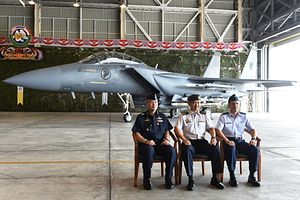Last week, the United States, Singapore, and Thailand held the 25th iteration of a trilateral air force exercise between the three sides. The silver anniversary of the drills highlighted the ongoing defense activity ongoing between the three countries in the wider Asia-Pacific region amid wider domestic and foreign policy developments therein.
As I have noted before in these pages, Thailand, a U.S. treaty ally, and Singapore, a longtime U.S. strategic partner, have long factored into U.S. efforts to build out alliances and partnerships in Southeast Asia as well as in the wider Asia-Pacific more generally, both independently as well as in a more collective fashion.
A case in point of trilateral engagement between all three countries has been Cope Tiger, an annual exercise that has been conducted between the three countries since 1994. In subsequent years, there have been other instances seen with respect to trilateral engagement as well in the defense realm following from Cope Tiger as well, with an example being the conduct of trilateral exercises in the South China Sea as part of the longtime Cooperation Afloat Readiness and Training (CARAT) exercise that was publicly announced back in 2017, which was part of a wider multilaterization of U.S. exercises in the region.
Last week, this trilateral was in the spotlight again with the launch of the 25th iteration of the Cope Tiger exercise, effectively marking the silver anniversary of the drills which was commemorated by the three sides. The flying training phase of Exercise Cope Tiger 2019 kicked off on March 11 and will last until March 22, following the command post exercise that was held in Singapore from December 12 to December 13 last year as well.
Per Singapore’s defense ministry (MINDEF), the flying training component of the air exercise, held at Korat Air Base, Thailand, involves a total of 69 aircraft, 29 Ground-Based Air Defense (GBAD) systems, and about 2,000 personnel from all the three participating nations.
The drills themselves comprise a series of interactions. Training activities include participants engaging large-scale air defense and strike missions in a challenging environment, designed to allow them to sharpen their operational competencies. According to MINDEF, in addition to these engagements, personnel from the three air forces also took part in joint socio-civic programs to donate educational and sports equipment to local schools, as well as to provide basic health and dental services to the local communities in the vicinity of the Korat Air Base and Chandy Range.

































